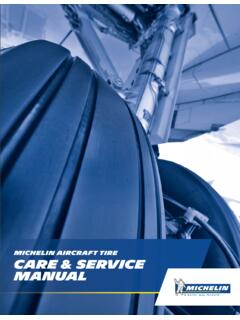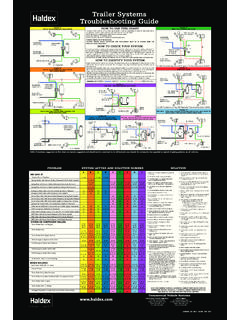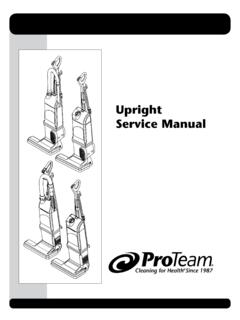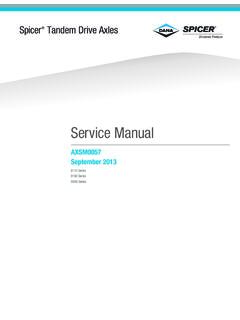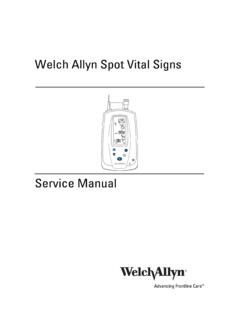Transcription of Pioneer Pump Service Manual
1 Service MANUALPIONEER PUMP3 Pioneer PUMPTABLE OF CONTENTSI ntroduction ..4 Purpose and Scope of this Manual ..4 Recording Model and Serial Numbers ..4 Safety Warnings and Notices ..5 Vacuum Assist System .. 6 Main Components ..6 Theory of Operation ..7 disassembly and Assembly ..9 Priming Chamber and Posi-Valve ..18 Theory of Operation ..18 disassembly and Assembly ..21 Discharge Check Valve ..24 Theory of Operation ..24 disassembly and Assembly ..25 SAE Housing and Coupler ..26 SAE Bracket (Engine Mount) Coupling ..26 disassembly and Assembly ..26 Bearing Frame ..29 General Information ..29 disassembly and Inspection ..29 Reassembly ..32 Pump End ..35 Theory of Operation ..35 disassembly and Reassembly ..36 Appendix ..40 Troubleshooting Guide ..474 Pioneer PUMPINTRODUCTIONT hank you for purchasing a Pioneer Centrifugal Pump.
2 We are confident that you will enjoy long and satisfactory Service from this product . This pump is designed for handling non-volatile, non-flammable, mild industrial corrosives, residues and slurries . We want you to be safe, so please operate the pump safely and in accordance with the guidelines, cautions and warnings written in this Manual .When your pump requires maintenance or repair, it is always a good idea to insist on only genuine Pioneer Pump repair parts . These parts are designed to give you the best life and performance with your pump . When we design the parts, we have your safety in mind . We wish you safe and productive pumping with your Pioneer Pump .Purpose and Scope of this ManualThis Manual provides information about the disassembly and repair of your Pioneer Pump . It is intended to be used by experienced technicians with the proper tools and workshop equipment, and by using the industry-accepted best practice for the safe and effective repair of your pump.
3 Since one pump application is different from another, this Manual cannot possibly cover each and every situation . If you have any questions about the procedures covered in this Manual , please contact your Pioneer distributor or the nearest Pioneer company branch .Recording Model and Serial NumbersYour pump's serial number plate is located on the pump back plate (or brac-plate) or on the pump volute . Please record the model and serial number for your Pioneer Pump in the spaces provided below . It will make it easier for you when parts or services are required from Pioneer Pump .Pump Model: _____Pump Serial Number: _____Engine/Electric Motor Brand and Model: _____Engine/Electric Motor Serial Number: _____Pump Serial Number Plate5 Pioneer PUMP W ARNINGThis Manual provides installation, operation and maintenance instructions for your Pioneer Pump.
4 It is intended to make your personnel aware of any procedure that requires special attention due to potential hazards to personnel or equipment . Read all instructions carefully, and remember, pump installations are seldom identical . Centrifugal pumps are designed for specific Service and may or may not be suited for any other Service without loss of performance or potential damage to equipment or personnel . Therefore, this Manual cannot possibly provide detailed instructions and precautions for each specific application . It is the owner/installer s responsibility to ensure that applications not addressed in this Manual are performed only after establishing that neither operator safety nor pump integrity are compromised by the installation . If there is ever any doubt about suitability for a specific purpose, contact Pioneer Pump, Inc.
5 Or your Pioneer Pump distributor for assistance . W ARNINGB efore attempting to Service or maintain this pump, read this Manual carefully . Operators and maintenance personnel should have a good understanding of all aspects of this pump and the pumping conditions . Failure of operating personnel to be familiar with all aspects of the pump operation outlined in this Manual could contribute to equipment damage, bodily injury or possible death . W ARNINGWhen you Service your Pioneer Pump, be sure to only use genuine Pioneer Pump parts . These parts are designed to give you the longest wear life and the performance the pump was designed to achieve . We have your safety in mind when we design the parts we use in Pioneer pumps . If you decide to use other brand parts in your Pioneer Pump, operating safety could be compromised and the Pump s warranty will be void.
6 W ARNINGIf this pump is used to handle any hazardous materials that can cause illness, either directly or indirectly, take precautions by wearing approved protective clothing and using appropriate safety equipment . Also, review the section on vacuum pump venting . Use lifting and moving equipment in good repair and with adequate capacity to prevent injuries to personnel or damage to the equipment . W ARNINGAny lifting equipment is to be rated for at least five (5) times the weight of the item being lifted . Use only established methods when lifting or moving any heavy components . Attach lifting equipment to the lifting device fitted to the pump . If chains, cables, or slings are wrapped around the pump to lift it, ensure that they are positioned so the load is balanced and they do not damage the pump.
7 The lifting bail on trailer- or skid-mounted units is intended for use in lifting the pump package only . Any other items placed on the pump package during a lift could cause the lifting bail to fail and the pump package to fall, possibly causing property damage, personal injury or death . Suction and discharge hoses and piping must be removed from the pump before lifting . W ARNINGDo not operate the pump without guards in place over the rotating parts . Exposed rotating parts can catch clothing, fingers, or tools, causing severe injury to personnel .6 Pioneer PUMPVACUUM ASSIST SYSTEMThe Pioneer Pump Priming System is designed to allow the pump to prime without using a foot valve and without manually adding water to the system .Main ComponentsThe main components of the priming system are shown in the following drawing:The pump starts with the suction pipe in the water and the discharge check valve closed.
8 The priming pump begins to evacuate air from the suction pipe and pump end . The resulting vacuum in the suction pipe causes water to rise in the pipe until it floods the pump end . Then the pump primes . Carryover (water transfer to the priming pump) is prevented when a float ball in the priming chamber rises with the water level, closing a valve .Priming PumpPriming Chamber Ball ValvePriming ChamberDischarge Check Valve(not shown)Main Components of the Priming SystemPump Casing7 Pioneer PUMPVACUUM ASSIST SYSTEM (CONT.)Theory of OperationThe vacuum pump is a key part of the priming system . Its function is to remove air and create a vacuum at the pump suction port while the centrifugal pump input shaft is rotating .From the diagram, the key functional parts of the vacuum pump are:1 . Pump casing2 . Inlet valve3.
9 Actuator (piston) valve4 . Actuator seal5 . Actuator (piston)6 . Exhaust valve7 . Actuator (piston) rod assembly and crankAs viewed from its drive pulley, the vacuum pump rotates in a clockwise direction in order to evacuate air from the vacuum pump system .The air flow through the pump is through the inlet nozzle, passing the inlet valve, past the actuator (piston) valve at the center of the piston, through the exhaust valve, and out the exhaust nozzle .1654372 Inlet ValveActuator ValveExhaust Valve8 Pioneer PUMPWith the pump drive pulley operating from the 12 o clock position, the piston rod and crank force the piston in a downward direction . Increasing air pressure below the piston closes the inlet valve and opens the actuator valve . Air is allowed to flow into the upper chamber of the pump casing (above the piston) until the drive pulley reaches the 6 o clock position.
10 From the six o clock position, the piston rod and crank force the piston in an upward direction . Increasing air pressure above the piston opens the exhaust valve and forces the actuator valve closed . Air is then pushed out of the area above the piston and through the exhaust valve until the drive pulley again reaches the 12 o clock position .At the same time, as the piston is pushed upward, a vacuum is created in the lower chamber of the pump casing (below the piston) . The vacuum pulls the inlet valve open, and air flows into the pump past the inlet valve .This cycle repeats itself until the inlet of the pump is closed either by the valves in the priming chamber or by closing the ball valve on top of the priming chamber . In the closed condition, no air enters the vacuum pump . The inlet valve, the piston valve, and the exhaust valve all remain closed.

